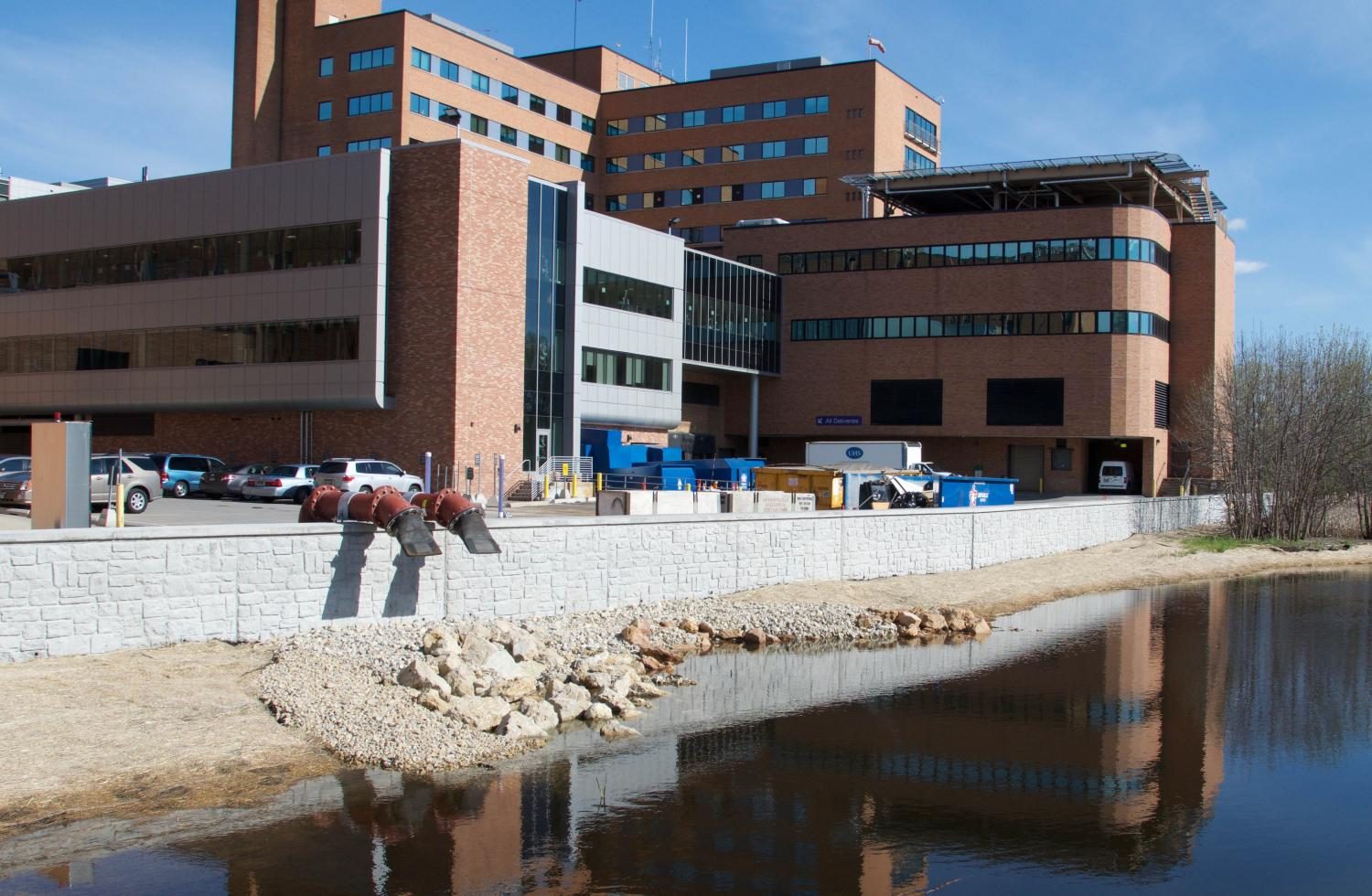Project officials outline building process
Park Nicollet Methodist Hospital receives new flood wall
May 24, 2017
Since the flooding of the loading docks at Park Nicollet Methodist Hospital in 2014, Minnehaha Creek Watershed District project and land technician Laura Domyancich said she has supported the hospital’s idea of working on a flood wall every step of the way.
“The flooding in 2014 was considered a 100 year flood event, something that happens every 100 years,” Domyanich said. “After that flood event and the flooding in 2014, that’s when the planning work started, to do the floodplain mitigation and flood wall.”
According to Domyancich, construction of the wall started last fall and ended in April.
“The wall was under construction from fall of last year until April of this year, so about six months total,” Domyancich said.
Freshman Hilda Habia said the idea of a flood wall is necessary and sees it as useful if there are lasting results.
“Well I think that they should do something that will set up (something beneficial)”, Habia said. “If it’s permanent, it’s a good thing. If it’s not, then it’s not really helpful.”
According to sophomore Emma Meents, the flood wall improves productivity of the loading docks.
“It would help the production and quality of their medicine and how it would get in for the patients,” Meents said.
Domyancich said the flooding occurred as a result of rising waters in the Minnehaha Creek.
“The Minnehaha Creek, which runs by the hospital near the wetland on the west side of the hospital flooded had regional flooding in 2014,” Domyancich said. “The creek exceeded length, and caused flooding on the lower dock of the hospital.”
According to Domyancich, there were many steps involved in making the flood wall happen.
“It takes a long time to construct and design a project like that, and things have kind of been in motion ever since that flood ended ,” Domyanich said. “(Also), they get permission from the city, which all takes a fair amount of time.”
Meents said the flood wall’s construction will have a major impact on the hospital’s quality for its patients.
“Well, it’s very important because a hospital needs to stay functioning, and it needs to stay as functioning as possible so it can be good for its patients,” Meents said.
Domyanich said the components of the flood wall will help prevent any water from the creek and wetlands from ever entering the loading docks.
“The flood wall is approximately four feet in height, it’s made of concrete block, and it’s solid, and it sort of has a decorative surface on it,” Domyanich said. “Basically it looks like a retaining wall — it has sidewalks on one side because there is a boardwalk that goes towards the wetland restoration, and on the opposite side is where the wetland restoration and floodplain mitigation area is.”
Habia said by updating the infrastructure and maintaining construction, the hospital is safer.
“I think it’s very important for a hospital to be updating their infrastructure and do construction , because first of all, if they are going to have patients, and the hospital is (old), you’re not going to be sure that it’s all safe for the patients”, Habia said.




